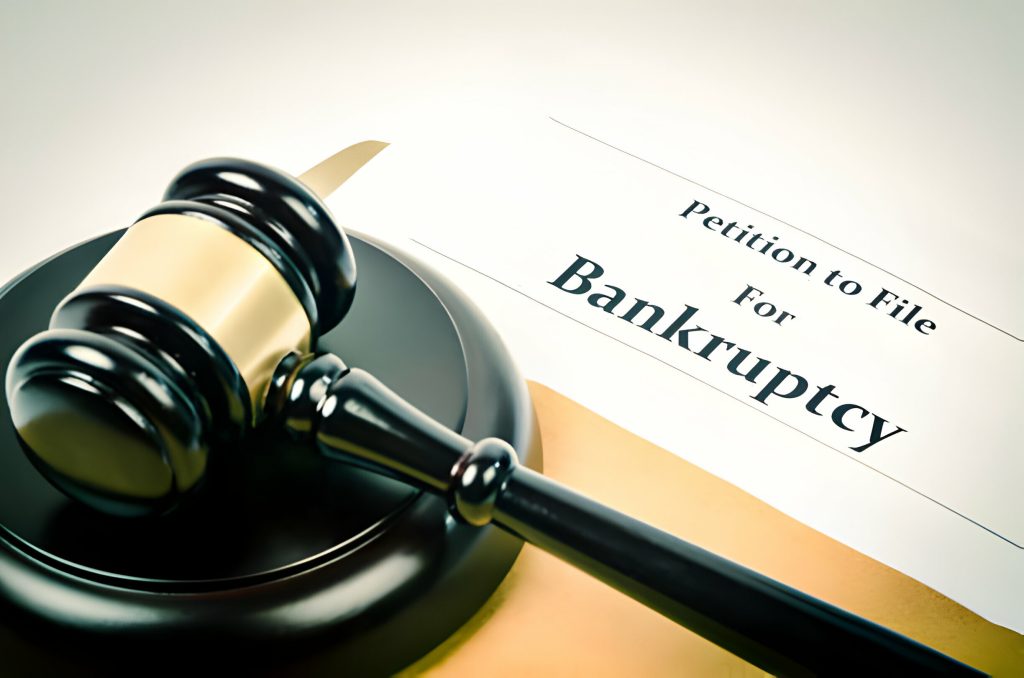Are you drowning in debt and feeling like bankruptcy is your only way out? It may seem like your financial future is doomed, but fear not! Contrary to popular belief, you can have not just one, but two bankruptcies in your lifetime. The U.S. Bankruptcy Code actually allows for multiple filings, with certain regulations and waiting periods in place. So don’t despair just yet – let’s dive into the legalities of having two bankruptcies and explore how it can affect your financial situation.
Understanding the Legalities of Multiple Bankruptcy Filings
You can file for bankruptcy multiple times, but there are rules and waiting periods that determine how often you can file. Understanding the legalities of multiple bankruptcy filings is crucial to avoid any second bankruptcy implications. Filing for bankruptcy again may have financial consequences, so it’s important to consider seeking professional advice before making a decision. A bankruptcy attorney or certified credit counselor can provide guidance and help explore alternatives to bankruptcy, such as credit counseling sessions or debt management plans. It’s also essential to understand the impact on your credit score, as filing for bankruptcy multiple times can have long-term effects. Taking the time to weigh the pros and cons and seek professional advice will ensure that you make an informed decision about your financial future.
Waiting Periods Between First and Second Bankruptcy Filings
The waiting periods between first and second bankruptcy filings vary depending on factors such as the type of discharge received and the chapter of bankruptcy previously filed. Factors affecting eligibility and the type of discharge received in your first bankruptcy case play a significant role in determining when you can file for bankruptcy again. The waiting period can range from two to eight years, depending on the specific circumstances. It is essential to consider the financial consequences of filing for bankruptcy multiple times, including the impact on your credit score and access to credit. Seeking professional guidance from a bankruptcy attorney or certified credit counselor is highly recommended to navigate through this process effectively. Additionally, exploring alternatives to bankruptcy, such as credit counseling sessions or debt management plans, may provide viable options for managing your debts without filing for bankruptcy again.
Factors Affecting the Waiting Period for a Second Bankruptcy Filing
The waiting period for a second bankruptcy filing can vary based on factors such as the type of discharge received and the chapter of bankruptcy previously filed. These factors play a crucial role in determining your eligibility to file for bankruptcy again and the consequences you may face. It is important to consider these factors carefully before making any decisions.
To help you understand the waiting periods between bankruptcy filings, here is a table outlining the time limits based on different scenarios:
| Previous Bankruptcy | Type of Discharge | Chapter of Second Filing | Waiting Period |
|---|---|---|---|
| Chapter 7 | Chapter 7 | Chapter 7 | 8 years |
| Chapter 7 | Chapter 13 | Chapter 7 | 6 years* |
| Chapter 13 | Chapter 7 | Chapter 13 | 4 years |
| Chapter 13 | Chapter 13 | Any | 2 years |
*Unless all unsecured creditors were paid in full during the initial Chapter 13 payment plan.
While bankruptcy can provide relief from overwhelming debt, it is essential to explore alternatives and understand the potential consequences before considering a second filing. Seeking professional advice and exploring options like credit counseling sessions or debt management plans can help you make an informed decision about your financial future.
Exploring the Successful Discharge of a First Bankruptcy Case
Consider exploring the benefits and drawbacks of filing for bankruptcy again after successfully discharging your first bankruptcy case. Once you have received a discharge in your first case, certain debts will be erased, providing you with a fresh start. However, it’s important to understand the impact on your credit score. Filing for bankruptcy can have a negative effect on your credit, making it difficult to obtain loans or mortgages in the future. Additionally, consider the repayment plans available to you. Chapter 7 is a quicker process but may require you to wait eight years before filing again. Chapter 13 allows for a reorganization of debts but has a waiting period of four to six years between filings. Seeking professional assistance from a bankruptcy attorney or certified credit counselor is recommended as they can guide you through the complexities of filing for bankruptcy again. Finally, explore alternatives to bankruptcy such as credit counseling sessions and debt management plans that may help improve your financial situation without resorting to another bankruptcy filing.
Considerations for Filing a Second Bankruptcy Case
Before deciding to file for a second bankruptcy case, it’s important to evaluate the benefits and drawbacks. Consider the financial impact and consequences of filing for bankruptcy again. Seeking professional guidance can help you explore debt relief options and bankruptcy alternatives. Below is a table that summarizes some key considerations:
| Benefits | Drawbacks |
|---|---|
| Provides a fresh start | Negative impact on credit score |
| Stops creditor harassment | Potential loss of assets |
| Eliminates or reduces debts | Public record of bankruptcy |
| Protects assets | Limited access to credit |
| Allows for financial reorganization | Difficulty in obtaining loans or mortgages |
Understanding these factors will help you make an informed decision about whether filing for a second bankruptcy case is the right choice for your situation. Seek professional help to navigate the complexities and ensure you are fully aware of the potential implications.
Frequency of Bankruptcy Filings: Is There a Limit
If you reach a point of desperation and want a way out, filing for bankruptcy more than once is possible. However, it’s important to understand the impact on your credit and consider bankruptcy alternatives before making this decision. Refiling after dismissal is also an option, but the timing depends on the reason for dismissal. Seeking professional advice from a bankruptcy attorney or certified credit counselor is highly recommended to navigate through the complexities of filing for bankruptcy multiple times. It’s crucial to weigh the long-term consequences of multiple bankruptcies, such as the negative impact on your credit score and limited access to credit in the future. Make sure to carefully evaluate your options and make an informed decision that best suits your financial situation.
Time Limits Between Bankruptcies: Practical Matters to Consider
The time limits between bankruptcy filings depend on the type of discharge and the type of case being filed. It is important to consider alternatives to bankruptcy, as it can have a significant impact on your credit. If you are a small business owner, there are options available for filing bankruptcy, such as Chapter 7 or Chapter 11. However, before making any decisions, it is crucial to seek professional advice to understand the consequences of multiple filings and to explore other potential solutions. Filing for bankruptcy multiple times may be necessary in some situations, but it is essential to carefully evaluate the benefits and drawbacks before proceeding. Remember that seeking professional help from experts like bankruptcy attorneys or certified credit counselors can provide guidance throughout this complex process.
Chapter 7 Vs. Chapter 11 Bankruptcy: Pros and Cons
Now that you understand the time limits between bankruptcies, let’s explore the pros and cons of Chapter 7 and Chapter 11 bankruptcy. When it comes to Chapter 7 bankruptcy, there are some advantages. It provides a fresh start by eliminating or reducing your debts and stops creditor harassment. Additionally, it offers asset protection and allows for financial reorganization.
However, there are drawbacks to consider as well. Filing for Chapter 7 bankruptcy can have a negative impact on your credit score and may result in the potential loss of assets. It also becomes a public record of your financial difficulties, which could limit your access to credit in the future and make it challenging to obtain loans or mortgages.
For small businesses, filing bankruptcy under Chapter 7 involves liquidating assets to pay off debts and closing the business. On the other hand, Chapter 11 bankruptcy allows small businesses to restructure their debts while continuing operations. While bankruptcy can provide an opportunity for small businesses to recover financially, it’s essential to carefully weigh the benefits against the drawbacks before making a decision.





